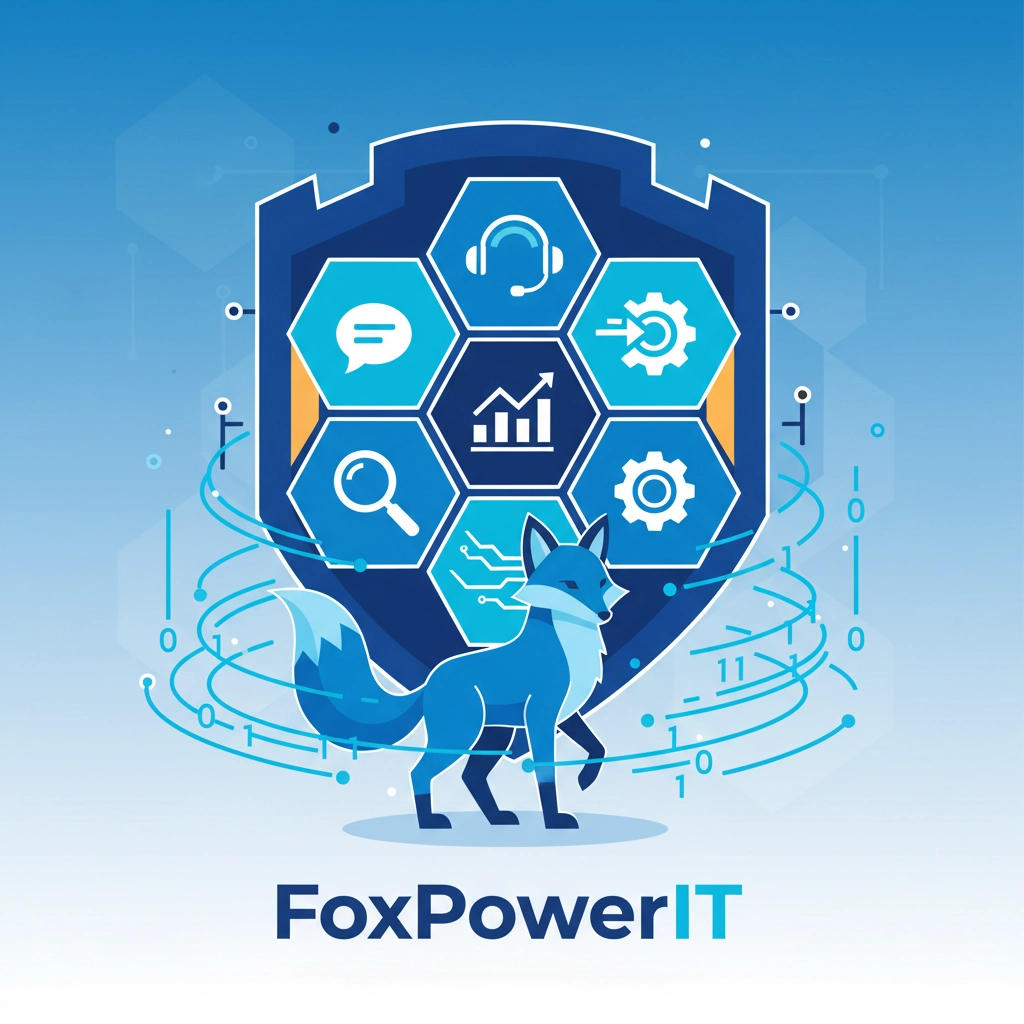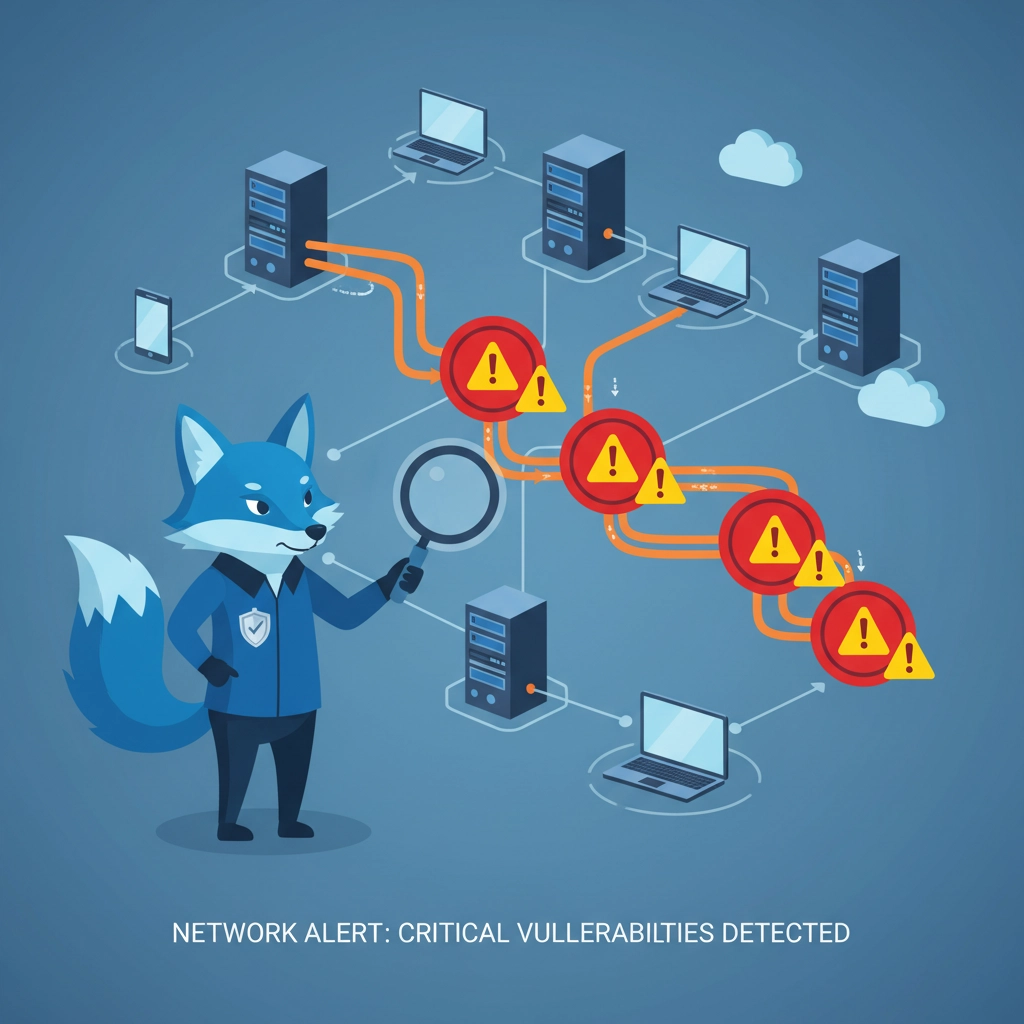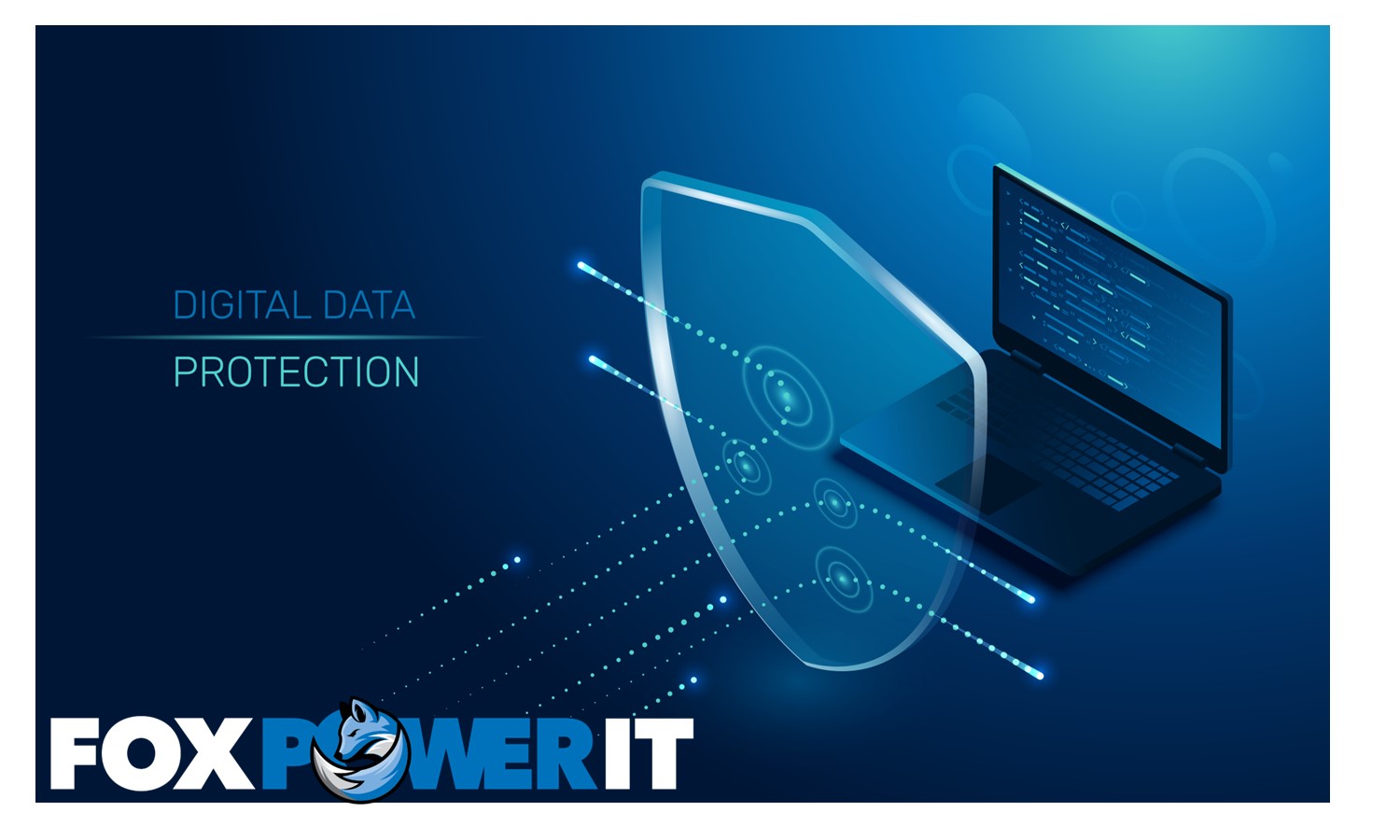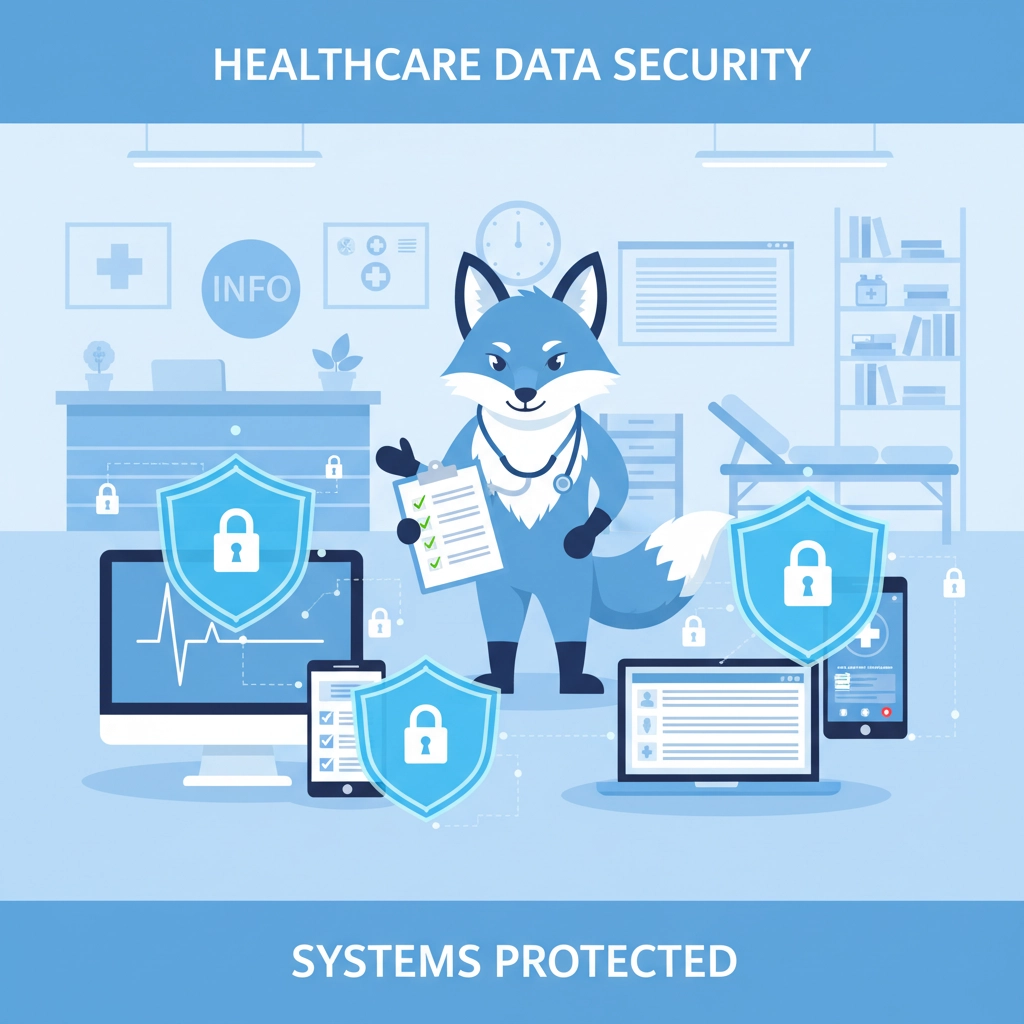Here's the uncomfortable truth: while Connecticut IT consultants are quietly implementing AI solutions for their biggest clients, small and medium businesses are being left in the dark about safe AI adoption strategies. It's not a conspiracy: it's simply that most SMBs don't know the right questions to ask.
The reality is that successful AI implementation isn't about having the latest technology or the biggest budget. It's about following a methodical approach that prioritizes security, minimizes risk, and delivers measurable business value from day one.
The Hidden Reality of AI Adoption for Connecticut SMBs
Most Connecticut SMBs approach AI backwards. They start by asking "What AI tools should we use?" instead of "What business problems need solving?" This fundamental mistake leads to expensive implementations that create more complexity than value.
The secret that experienced IT professionals understand is that AI implementation success depends more on proper planning and risk management than on the technology itself. Companies fail not because AI doesn't work, but because they skip the foundational steps that ensure safe, effective deployment.
Connecticut SMBs face unique vulnerabilities when implementing AI. Limited cybersecurity resources, smaller IT teams, and pressure to compete with larger businesses create a perfect storm for rushed AI adoption decisions. However, these same constraints can become advantages when you follow a structured approach.

The 10-Step Safe AI Implementation Framework
Step 1: Conduct a Business Pain Point Analysis
Before exploring any AI tools, document your specific operational challenges. Are you losing hours to repetitive data entry? Struggling with customer response times? Having trouble extracting insights from existing data?
Create a prioritized list of problems where AI could deliver measurable impact. Focus on processes that are currently manual, time-consuming, or error-prone. This foundation ensures your AI investment addresses real business needs rather than creating technological complexity for its own sake.
Step 2: Assess Your Data Infrastructure and Quality
AI systems require quality data to function effectively. Begin by auditing your existing data sources: customer records, transaction histories, website analytics, and operational metrics. Identify gaps, inconsistencies, and security vulnerabilities in your current data management practices.
Clean, structured data from reliable sources provides the backbone for any AI implementation. If your data isn't organized and accessible, AI tools will produce unreliable results regardless of their sophistication.
Step 3: Evaluate Cybersecurity Readiness
AI implementation significantly increases your attack surface. New data connections, cloud integrations, and automated processes create additional entry points for cybersecurity threats. Before implementing any AI solution, ensure your fundamental security controls are robust.
Conduct a comprehensive security assessment covering network protection, endpoint security, access controls, and data encryption. Consider partnering with a managed IT service provider to strengthen your security posture before AI deployment.

Step 4: Start with Proven, Low-Risk AI Tools
Avoid custom AI development for your initial implementation. Instead, begin with established, user-friendly solutions that offer immediate value with minimal technical risk. Consider tools like Microsoft 365 Copilot for content creation, automated chatbots for customer service, or AI-powered analytics platforms for business insights.
These solutions provide quick wins that build organizational confidence while you develop internal AI expertise. Success with simple applications creates momentum for more sophisticated implementations later.
Step 5: Choose a Specific, High-Impact Pilot Project
Rather than attempting broad AI implementation across multiple departments, focus on one specific business process with clear success metrics. Examples include automating invoice processing, enhancing customer support responses, or improving inventory forecasting.
Your pilot project should solve a real problem, have measurable outcomes, and be reversible if needed. Success with a targeted application proves AI value to stakeholders and provides lessons for scaling to other areas.
Step 6: Establish AI Governance and Testing Protocols
Develop clear guidelines for AI usage, including approval processes for AI-generated content, data handling procedures, and quality control measures. Create protocols for testing AI outputs, monitoring system performance, and detecting potential security issues.
These governance frameworks prevent costly mistakes like data breaches, compliance violations, or algorithmic bias. They also ensure consistent, professional results from your AI implementations.

Step 7: Implement Comprehensive Staff Training
AI adoption success depends entirely on user adoption. Provide thorough training on new AI tools, establish clear usage guidelines, and create ongoing support resources for your team. Address concerns about job displacement by emphasizing how AI enhances rather than replaces human capabilities.
Effective training programs include hands-on practice sessions, real-world use cases, and regular check-ins to address questions and challenges. Well-trained staff become AI advocates rather than resistance sources.
Step 8: Partner with AI Implementation Experts
Leverage specialized consulting to avoid expensive trial-and-error learning. AI consultants help prioritize use cases, select appropriate tools, ensure compliance requirements, and navigate technical complexities that could derail internal implementations.
This partnership approach allows SMBs to benefit from enterprise-level AI expertise without hiring dedicated specialists. Choose consultants with specific experience in your industry and company size.
Step 9: Monitor Performance and Measure ROI
Establish clear metrics for your AI implementation before deployment. Track both technical performance indicators (system uptime, processing speed, accuracy rates) and business outcomes (cost savings, productivity improvements, customer satisfaction scores).
Regular performance monitoring ensures your AI investment delivers expected returns and identifies optimization opportunities. Use these insights to refine your implementation and build business cases for expansion.
Step 10: Scale Systematically Based on Proven Results
After demonstrating success with your pilot project, expand AI implementation to additional business areas using the same methodical approach. Apply lessons learned from your initial deployment to new use cases in marketing, HR, finance, or operations.
Systematic scaling based on measured results ensures sustainable AI adoption rather than technology sprawl. Each expansion should deliver documented business value before moving to the next implementation phase.

Risk Management Best Practices
The most successful AI implementations follow a "crawl-walk-run" methodology that minimizes risk while building organizational capability. Crawl focuses on foundation building through needs analysis and simple tool adoption. Walk involves implementing data-driven processes and expanding AI usage. Run represents confident scaling across multiple business functions.
Common pitfalls include unrealistic expectations, inadequate security planning, and insufficient change management. Success requires understanding that AI is probabilistic rather than deterministic: outputs need human oversight and validation.
Building multiple layers of protection through proper governance, testing protocols, and monitoring systems enables confident AI adoption rather than cautious avoidance.
Your Next Steps for Safe AI Implementation
Connecticut SMBs that implement AI systematically gain significant competitive advantages over companies that either avoid AI entirely or rush into implementations without proper planning. The framework above provides a roadmap for capturing those benefits while minimizing risks.
The key insight is that safe AI adoption isn't about avoiding risks: it's about managing them proactively through structured planning, gradual deployment, and expert guidance when needed.
Ready to explore how AI can transform your Connecticut business operations while maintaining security and compliance? Contact FoxPowerIT for a comprehensive AI readiness assessment and implementation strategy tailored to your specific business needs.
Zero-Day Alert: Why 4 Million Cisco Firewalls Are Under Attack Right Now and the 7-Step Emergency Response Plan for Connecticut Businesses

At 3:47 PM on a Tuesday, Sarah's manufacturing company ground to a halt. Their Cisco firewall: the digital fortress protecting their entire network: had been compromised. By the time they discovered the breach, attackers had already established persistent access to their systems, threatening customer data, financial records, and operational continuity.
Sarah's story isn't unique. Right now, over 4 million Cisco firewalls worldwide contain critical vulnerabilities that cybercriminals are actively exploiting. Connecticut businesses using these devices face immediate risk of network compromise, data theft, and ransomware attacks.
The Cisco Firewall Crisis: What's Really Happening
Multiple critical vulnerabilities in Cisco's Adaptive Security Appliance (ASA) and Firepower Threat Defense (FTD) software are being exploited in the wild. These aren't theoretical security flaws: they're actively being weaponized by sophisticated threat actors to gain unauthorized network access.
The most concerning aspect is how these attacks bypass traditional detection methods. Compromised firewalls can appear to function normally while attackers maintain persistent access, steal sensitive data, and prepare for devastating ransomware deployments.
Connecticut SMBs are particularly vulnerable because many rely on managed service providers who may not have implemented emergency patching procedures or comprehensive monitoring systems. The false sense of security provided by having a "business-grade firewall" becomes dangerous when that firewall becomes the attack vector.

Immediate Threat Assessment for Your Business
High-Risk Indicators:
- Cisco ASA devices running software versions prior to the latest security updates
- Firepower Management Center deployments without recent patches
- Remote access VPN configurations on vulnerable devices
- Limited network monitoring and intrusion detection capabilities
Attack Vectors Being Exploited:
- Remote code execution through management interfaces
- Privilege escalation attacks targeting administrative access
- SSL VPN session hijacking and lateral network movement
- Persistent backdoor installation for long-term access
The time window for protecting your business is rapidly closing. Every day of delay increases your exposure to attack, data compromise, and business disruption.
The 7-Step Emergency Response Plan
Step 1: Immediate Device Inventory and Version Check
Document every Cisco security device in your network infrastructure. Record model numbers, software versions, and current patch levels for ASA firewalls, Firepower devices, and related security appliances.
Create a prioritized list based on internet exposure, critical system protection, and business impact. Devices protecting customer data, financial systems, or operational technology require immediate attention.
Contact your managed service provider or internal IT team for a comprehensive audit if you're unsure about your current device inventory. Time is critical: incomplete information leads to incomplete protection.
Step 2: Deploy Emergency Patches and Updates
Apply all available security patches immediately, prioritizing internet-facing devices and those protecting critical business systems. Cisco has released emergency updates addressing the most critical vulnerabilities.
Schedule patching during maintenance windows when possible, but don't delay beyond 48 hours for high-risk devices. The business disruption from planned maintenance is minimal compared to the catastrophic impact of a successful attack.
Test patch deployments in isolated environments first if you have staging capabilities. However, the current threat level may require accepting some risk to maintain security protection.

Step 3: Implement Enhanced Monitoring and Alerting
Deploy comprehensive network monitoring tools to detect suspicious activities that may indicate ongoing compromise. Look for unusual outbound connections, unexpected administrative access, and anomalous traffic patterns.
Configure real-time alerting for failed authentication attempts, configuration changes, and suspicious network behavior. Many attacks remain undetected for weeks or months: active monitoring compresses detection timeframes to hours or minutes.
Consider partnering with a managed security service provider if you lack internal monitoring capabilities. Professional 24/7 monitoring becomes critical during high-threat periods.
Step 4: Review and Strengthen Access Controls
Audit all administrative accounts with firewall management privileges. Disable unnecessary accounts, enforce multi-factor authentication, and review recent access logs for suspicious activities.
Implement network segmentation to limit potential attack impact. Even if firewall compromise occurs, proper segmentation prevents attackers from accessing all network resources simultaneously.
Change default passwords, administrative credentials, and shared access keys immediately. Many attacks succeed because organizations neglect basic credential hygiene on security devices.
Step 5: Conduct Comprehensive Security Scanning
Perform immediate vulnerability scanning across your entire network infrastructure to identify additional security gaps that attackers might exploit.
Look beyond firewall vulnerabilities to assess endpoint security, server configurations, and application vulnerabilities. Sophisticated attackers often use firewall compromise as an entry point for broader network exploitation.
Document and prioritize all discovered vulnerabilities based on exploitability and business impact. Create remediation timelines that address the most critical issues first.

Step 6: Backup and Recovery Verification
Test your data backup and recovery systems immediately. Ransomware attacks often follow firewall compromise, and your ability to recover operations depends on reliable backup systems.
Verify that backup data is isolated from network access and protected from encryption attacks. Air-gapped or immutable backup solutions provide the strongest protection against ransomware.
Create detailed recovery procedures and ensure key personnel understand their roles during a security incident. Practice makes the difference between smooth recovery and business-ending downtime.
Step 7: Develop Incident Response Procedures
Establish clear protocols for responding to suspected compromise, including communication plans, containment procedures, and recovery steps. Every minute counts during an active security incident.
Identify key contacts including internal IT staff, managed service providers, cyber insurance carriers, and legal counsel. Create communication trees that ensure rapid information flow during crisis situations.
Consider retaining incident response specialists who can provide emergency assistance if compromise occurs. Professional incident response services can mean the difference between contained damage and complete business disruption.
Long-Term Protection Strategies
Beyond immediate threat response, Connecticut businesses must implement comprehensive cybersecurity frameworks that prevent future attacks. This includes regular security assessments, employee training programs, and continuous monitoring systems.
The current Cisco vulnerability crisis highlights why relying solely on perimeter security creates dangerous single points of failure. Modern cybersecurity requires layered defense strategies that assume network compromise will occur.
Don't Wait for the Attack
The threat to Connecticut businesses from these Cisco vulnerabilities is immediate and severe. Every day without proper response increases your risk of joining the growing list of companies devastated by preventable cybersecurity incidents.
Professional cybersecurity guidance can mean the difference between protecting your business and becoming the next cautionary tale. Contact FoxPowerIT today for an emergency security assessment and comprehensive protection plan tailored to your business needs.
Your network security can't wait for convenient timing. The attackers certainly aren't waiting for yours.
Ransomware Groups Are Now Destroying Backups First: The Connecticut SMB's Complete Guide to Bulletproof Data Protection in 2025

The phone call came at 2:43 AM on a Monday. Tom's law practice had been hit by ransomware, but that wasn't the worst part. The attackers had spent three weeks inside his network, quietly identifying and destroying every backup before deploying their encryption payload. Years of client files, financial records, and case documents: gone.
Tom thought he was protected. He had backups running nightly, stored both locally and in the cloud. What he didn't know was that modern ransomware groups have fundamentally changed their attack methodology. They don't just encrypt your data anymore: they hunt down and eliminate your recovery options first.
This new reality requires Connecticut SMBs to completely rethink data protection strategies that may have worked five years ago but are dangerously inadequate today.
The New Ransomware Playbook: Why Traditional Backups Fail
Today's ransomware attacks follow a predictable three-phase methodology that makes traditional backup strategies obsolete:
Phase 1: Silent Infiltration and Reconnaissance (2-8 weeks)
Attackers gain initial access through phishing, compromised credentials, or software vulnerabilities. Instead of immediately deploying ransomware, they conduct extensive reconnaissance to map your network, identify critical systems, and locate all backup infrastructure.
Phase 2: Backup Elimination and Data Exfiltration (1-3 weeks)
Before deploying ransomware, attackers systematically destroy or encrypt backup systems, shadow copies, cloud storage connections, and recovery points. They simultaneously exfiltrate sensitive data to increase leverage during ransom negotiations.
Phase 3: Coordinated Encryption and Extortion
Only after eliminating recovery options do attackers deploy ransomware across your network. With backups destroyed and sensitive data stolen, businesses face impossible choices: pay substantial ransoms or face complete data loss and potential regulatory penalties.
This methodical approach explains why 73% of Connecticut businesses that experience ransomware attacks never fully recover their data, even when they pay the ransom.

The Connecticut SMB Vulnerability Gap
Connecticut SMBs face unique challenges that make them particularly vulnerable to modern ransomware attacks:
Limited IT Resources: Most SMBs rely on single-person IT departments or external managed service providers who may lack specialized cybersecurity expertise. This creates blind spots in backup security and incident response capabilities.
Budget Constraints: Pressure to minimize IT costs often leads to backup solutions that prioritize convenience over security. Consumer-grade cloud storage, simple network-attached storage devices, and basic backup software provide minimal protection against determined attackers.
Compliance Requirements: Connecticut businesses in healthcare, legal, and financial services face strict data protection regulations. Ransomware attacks that compromise client data can result in devastating regulatory penalties in addition to operational disruption.
Industry Targeting: Ransomware groups specifically target professional services firms, medical practices, and manufacturing companies that depend heavily on data availability and often lack sophisticated cybersecurity defenses.
The Bulletproof Data Protection Framework
Layer 1: Air-Gapped Backup Systems
True air-gapped backups remain physically disconnected from your network, making them impossible for attackers to access remotely. This requires rotating physical storage devices or implementing backup systems with manual connection processes.
Modern air-gapped solutions include removable storage devices, dedicated backup networks, and immutable cloud storage that prevents deletion or modification of backup data. These systems require more manual intervention but provide ultimate protection against ransomware attacks.
The key is ensuring air-gapped backups occur frequently enough to minimize data loss while maintaining complete network isolation during storage and retention periods.
Layer 2: Immutable Cloud Storage
Cloud backup services with immutable storage features prevent anyone: including attackers with administrative credentials: from deleting or modifying backup data during specified retention periods.
Look for backup solutions offering "write once, read many" (WORM) capabilities, legal hold features, and object lock functionality. These features ensure that even if attackers gain access to your cloud accounts, they cannot eliminate your recovery options.
Implement multiple cloud providers to avoid single points of failure. Geographic distribution and vendor diversification provide additional protection against service outages and account compromise.

Layer 3: Rapid Detection and Response
Modern backup protection requires continuous monitoring for signs of compromise. Implement network monitoring tools that detect unusual backup system access, failed backup jobs, and suspicious administrative activities.
Deploy endpoint detection and response (EDR) solutions on backup servers and administrative workstations. Early detection of compromise allows you to isolate backup systems before attackers can eliminate recovery options.
Consider partnering with managed security service providers who offer 24/7 monitoring and incident response capabilities. Professional monitoring can detect and contain attacks during the reconnaissance phase, before backup elimination begins.
Layer 4: Network Segmentation and Access Controls
Isolate backup infrastructure from production networks using VLANs, firewalls, and dedicated network segments. Attackers who gain access to user workstations or business applications should not automatically gain access to backup systems.
Implement strict access controls for backup administration, including multi-factor authentication, privileged access management, and regular credential rotation. Limit backup administrative privileges to essential personnel and require approval processes for system modifications.
Use dedicated service accounts for backup operations rather than shared administrative credentials. This approach provides better audit trails and limits the impact of credential compromise.
Layer 5: Regular Testing and Validation
Backup systems that aren't regularly tested often fail during actual recovery scenarios. Implement monthly restore testing that validates both data integrity and recovery procedures.
Document recovery time objectives and recovery point objectives for critical business systems. Test your ability to meet these targets using actual backup data and recovery procedures.
Create detailed incident response procedures that include backup system isolation, alternative recovery methods, and communication protocols. Regular tabletop exercises ensure your team can execute recovery plans under pressure.

Implementation Priorities for Connecticut SMBs
Immediate Actions (0-30 days):
- Audit current backup systems for network accessibility and administrative vulnerabilities
- Implement multi-factor authentication on all backup administrative accounts
- Deploy endpoint protection on backup servers and administrative workstations
- Create an air-gapped backup process for critical business data
Short-term Goals (30-90 days):
- Implement immutable cloud backup solutions with appropriate retention periods
- Deploy network monitoring tools that detect backup system compromise
- Develop and test incident response procedures for ransomware attacks
- Conduct comprehensive restore testing for critical business systems
Long-term Strategy (90+ days):
- Partner with specialized managed security providers for 24/7 monitoring
- Implement comprehensive network segmentation protecting backup infrastructure
- Develop business continuity plans that account for extended data recovery periods
- Establish relationships with incident response specialists and cyber insurance providers
The Business Case for Advanced Data Protection
The average ransomware attack costs Connecticut SMBs $1.2 million when including business disruption, data recovery, regulatory penalties, and reputation damage. Advanced data protection systems typically cost less than 5% of potential ransomware impact.
More importantly, bulletproof data protection provides competitive advantages beyond ransomware protection. Reliable backup and recovery systems improve business agility, support compliance requirements, and enable confident technology adoption.
Companies with comprehensive data protection strategies recover faster from all types of disruptions: not just ransomware attacks. This resilience becomes increasingly valuable as businesses depend more heavily on digital systems and data-driven operations.
Your Protection Starts Now
Connecticut SMBs can no longer rely on traditional backup strategies to protect against modern ransomware attacks. The question isn't whether you'll face a sophisticated attack: it's whether you'll be prepared when it happens.
Building bulletproof data protection requires specialized expertise, proper planning, and the right technology solutions. Don't wait for an attack to discover the gaps in your current backup strategy.
Contact FoxPowerIT today for a comprehensive data protection assessment and implementation plan designed specifically for Connecticut businesses. Your data's security: and your business's survival: depends on acting before attackers do.
HIPAA Alert: Why Connecticut Dental and Legal Practices Are Getting Hit with $50K+ Fines and the 5-Minute IT Security Self-Assessment That Prevents Them

Dr. Martinez thought her dental practice was HIPAA compliant. She had signed a business associate agreement with her software vendor, trained her staff on privacy policies, and implemented basic password requirements. Then came the phone call that changed everything: a patient data breach that would cost her practice $75,000 in fines, plus legal fees, notification costs, and immeasurable reputation damage.
The breach wasn't caused by sophisticated hackers or complex technical vulnerabilities. It happened because her practice email system wasn't properly encrypted, and a single patient inquiry sent to the wrong address exposed protected health information to unauthorized recipients.
Connecticut dental and legal practices are facing an unprecedented wave of HIPAA enforcement actions, and the violations aren't happening where most practitioners expect them.
The Hidden HIPAA Compliance Crisis
The Department of Health and Human Services has collected over $130 million in HIPAA fines since 2020, with small practices bearing the brunt of enforcement actions. Connecticut practices face additional state-level privacy regulations that compound federal compliance requirements.
What makes this crisis particularly dangerous for small practices is that most violations stem from basic IT security failures rather than intentional privacy breaches. Practitioners who believe they're following privacy best practices discover too late that their technology systems create compliance vulnerabilities they never knew existed.
The most common violations hitting Connecticut practices:
- Unsecured email communications containing patient information
- Inadequate access controls allowing unauthorized system access
- Missing encryption on laptops, tablets, and mobile devices
- Failure to conduct required security risk assessments
- Insufficient staff training on electronic protected health information handling
The financial impact extends far beyond regulatory fines. Practices face patient notification costs, credit monitoring services, legal defense expenses, increased insurance premiums, and potential patient lawsuits that can threaten business viability.

Why Small Practices Are Primary Targets
HIPAA enforcement has shifted dramatically toward small practices because regulators recognize that large healthcare organizations have invested heavily in compliance infrastructure while small practices often lack proper safeguards.
Small dental and legal practices handle extremely sensitive information but typically operate with minimal IT support, limited cybersecurity expertise, and budget constraints that lead to corner-cutting on technology security. This combination creates perfect targets for both regulatory enforcement and cybersecurity attacks.
Connecticut's regulatory environment adds complexity through state privacy laws that may conflict with or exceed federal HIPAA requirements. Practices must navigate multiple compliance frameworks simultaneously while maintaining operational efficiency.
The false sense of security created by basic privacy training and policy documentation masks serious technical vulnerabilities that auditors and attackers can easily exploit.
The 5-Minute IT Security Self-Assessment
This rapid assessment identifies the most critical compliance gaps that lead to HIPAA violations and fines:
Assessment Area 1: Email and Communication Security (60 seconds)
Check These Items:
- Is all patient information sent via encrypted email systems?
- Do staff members use personal email accounts for any business communications?
- Are patient communications automatically archived and protected?
- Can patient information be accidentally sent to wrong recipients?
Red Flags: Using standard email for patient communications, allowing personal email access on work devices, lacking encrypted communication options.
Assessment Area 2: Access Controls and Authentication (60 seconds)
Check These Items:
- Does every system user have unique login credentials?
- Are passwords required to meet complexity standards and regular changes?
- Is multi-factor authentication enabled on all systems containing patient data?
- Are former employee accounts promptly deactivated?
Red Flags: Shared login credentials, simple passwords, single-factor authentication, inactive accounts remaining accessible.

Assessment Area 3: Device and Data Encryption (60 seconds)
Check These Items:
- Are all laptops, tablets, and mobile devices encrypted?
- Is patient data encrypted both in transit and at rest?
- Are backup systems properly encrypted and secured?
- Can patient information be accessed on lost or stolen devices?
Red Flags: Unencrypted devices containing patient data, plain-text data storage, accessible backup systems, missing device security controls.
Assessment Area 4: Network and System Security (90 seconds)
Check These Items:
- Is your practice network properly segmented and secured?
- Are software updates and security patches applied regularly?
- Do you have comprehensive endpoint protection on all devices?
- Are guest networks separate from systems containing patient data?
Red Flags: Unsecured wireless networks, outdated software, missing antivirus protection, shared network access for guests and patients.
Assessment Area 5: Documentation and Risk Management (30 seconds)
Check These Items:
- Have you conducted a comprehensive security risk assessment within the past year?
- Are all technology vendors properly vetted with signed business associate agreements?
- Do you have documented incident response procedures for data breaches?
- Is compliance training conducted regularly and documented for all staff?
Red Flags: Missing risk assessments, unsigned vendor agreements, no incident response plan, inadequate training documentation.
Critical Compliance Gaps and Solutions
Email Security: The #1 Violation Source
Most HIPAA violations stem from unsecured email communications. Standard email systems provide no encryption, access controls, or audit capabilities required for patient information.
Solution: Implement HIPAA-compliant email systems that provide automatic encryption, secure message delivery, and comprehensive audit logging. Solutions like Microsoft 365 with Advanced Threat Protection or specialized healthcare communication platforms ensure compliance while maintaining usability.
Access Control Failures
Shared passwords, excessive user privileges, and missing authentication controls create compliance violations and security vulnerabilities that regulators consistently target.
Solution: Deploy identity management systems with role-based access controls, multi-factor authentication, and automated user provisioning/deprovisioning. These systems ensure appropriate access while maintaining detailed audit trails required for compliance.
Inadequate Encryption Standards
Unencrypted devices and data storage create automatic HIPAA violations regardless of whether actual breaches occur. Regulators can impose fines based solely on the potential for unauthorized access.
Solution: Implement full-disk encryption on all devices, ensure data-in-transit encryption for all communications, and deploy encrypted backup systems. Modern encryption solutions provide transparent protection without impacting user productivity.

Building Comprehensive HIPAA Compliance
Beyond addressing immediate violation risks, Connecticut practices must implement comprehensive compliance frameworks that address evolving regulatory requirements and emerging cybersecurity threats.
Foundation Elements:
- Comprehensive security risk assessments conducted annually
- Detailed policies and procedures covering all HIPAA requirements
- Regular staff training with documented completion tracking
- Incident response procedures tested and updated regularly
- Business associate agreements with all technology vendors
Technology Requirements:
- Enterprise-grade endpoint protection and monitoring
- Network segmentation separating patient data systems
- Comprehensive backup and disaster recovery capabilities
- Professional network monitoring and threat detection
- Regular vulnerability scanning and penetration testing
Ongoing Management:
- Quarterly compliance assessments and gap analysis
- Monthly security awareness training and testing
- Regular technology updates and security patch management
- Annual compliance audits by qualified professionals
- Continuous monitoring and incident response capabilities
The True Cost of Non-Compliance
HIPAA fines represent only the visible cost of non-compliance. Connecticut practices face additional expenses including patient notification requirements, credit monitoring services, legal defense costs, increased insurance premiums, and potential civil lawsuits.
The reputation damage from HIPAA violations can devastate small practices that depend on community trust and word-of-mouth referrals. Patients increasingly research practices online and avoid providers with publicized compliance failures.
Business disruption during investigation and remediation periods can force practices to reduce operations, delay patient care, and lose revenue during critical periods. Many small practices never fully recover from significant compliance violations.
Take Action Before Regulators Do
Connecticut dental and legal practices cannot afford to treat HIPAA compliance as an optional business consideration. The regulatory environment will only become more stringent as healthcare digitization continues and privacy concerns increase.
Professional HIPAA compliance assessment and implementation ensures your practice meets all current requirements while building frameworks that adapt to future regulatory changes. The investment in proper compliance infrastructure pays for itself by preventing costly violations and enabling confident technology adoption.
Don't wait for an audit or breach to discover compliance gaps that could have been prevented. Contact FoxPowerIT today for a comprehensive HIPAA compliance assessment and implementation plan designed specifically for Connecticut healthcare and legal practices.
Your practice's reputation, financial stability, and patient trust depend on getting compliance right the first time.
Are Managed IT Services Dead? Why 89% of Connecticut SMBs Are Switching to Strategic IT Partnerships (And You Should Too)

Last month, Jennifer fired her managed IT service provider. Not because they were incompetent: they kept her systems running, responded to tickets, and maintained decent uptime. She fired them because they were holding her business back.
While Jennifer's competitors were leveraging AI for customer insights, implementing advanced cybersecurity frameworks, and scaling operations with cloud-native solutions, her MSP was focused on keeping her 2019 server running and responding to password reset requests.
Jennifer isn't alone. Across Connecticut, forward-thinking SMBs are abandoning traditional managed IT services in favor of strategic technology partnerships that drive business growth rather than simply maintaining the status quo.
The shift represents a fundamental reimagining of how businesses should approach technology: from a necessary expense to manage to a competitive advantage to leverage.
The Death of "Break-Fix" IT Mentality
Traditional managed IT services emerged from the break-fix era when technology was simpler, threats were predictable, and business requirements changed slowly. The model worked when IT's primary role was keeping email systems operational and preventing virus infections.
Today's business environment demands technology strategies that enable competitive differentiation, not just operational continuity. Companies need IT partners who understand industry trends, regulatory requirements, and emerging technologies that create business opportunities.
Why Traditional MSPs Are Becoming Obsolete:
- Reactive vs. Proactive: Traditional MSPs respond to problems rather than preventing them or identifying opportunities for business improvement
- Cost Center Mindset: They focus on minimizing IT expenses rather than maximizing technology ROI and business value
- Limited Expertise: Most MSPs excel at basic system maintenance but lack specialized knowledge in cybersecurity, compliance, AI implementation, or digital transformation
- Vendor Management: They often prioritize vendor relationships over client outcomes, leading to technology recommendations that benefit suppliers rather than businesses
The gap between traditional IT management and strategic technology leadership has grown too wide for competitive businesses to ignore.
[IMAGE_HERE]
What Strategic IT Partnerships Actually Deliver
Strategic IT partnerships transform technology from a business constraint into a growth accelerator. Instead of just maintaining existing systems, strategic partners help businesses leverage technology for competitive advantage.
The Strategic Partnership Difference:
Business Alignment: Strategic partners understand your industry, competitive landscape, and growth objectives. They align technology investments with business strategy rather than simply managing existing infrastructure.
Proactive Innovation: They identify emerging technologies that create business opportunities, pilot new solutions, and help you stay ahead of industry trends rather than playing catch-up.
Risk Management: Beyond basic cybersecurity, they provide comprehensive risk assessment, compliance guidance, and business continuity planning that protects your entire organization.
Scalability Planning: They design technology architectures that support growth, enabling rapid scaling without major infrastructure overhauls or system migrations.
Performance Optimization: They continuously analyze and optimize technology performance to improve productivity, reduce costs, and enhance customer experiences.
Real-World Impact: Connecticut Success Stories
Manufacturing Company: Transformed from paper-based processes to integrated digital workflows, reducing order processing time by 70% and eliminating manual errors that were costing $15,000 monthly in rework.
Professional Services Firm: Implemented AI-powered client analytics that identified $200,000 in additional revenue opportunities from existing clients while reducing proposal preparation time by 60%.
Medical Practice: Deployed advanced telehealth capabilities and patient engagement systems that increased patient satisfaction scores by 40% while reducing administrative overhead by 25%.
These outcomes aren't possible with traditional managed IT services focused solely on system maintenance and problem resolution.
[IMAGE_HERE]
The Technology Transformation Framework
Strategic IT partnerships follow a comprehensive framework that addresses every aspect of business technology rather than isolated technical issues:
Phase 1: Business Technology Assessment
Strategic partners begin with comprehensive business analysis rather than technical audits. They understand your competitive challenges, growth objectives, regulatory requirements, and operational pain points before evaluating technology solutions.
This business-first approach ensures technology investments deliver measurable business value rather than just improved technical metrics.
Phase 2: Strategic Technology Roadmapping
Based on business requirements, strategic partners develop multi-year technology roadmaps that align with growth plans and budget realities. These roadmaps prioritize investments based on ROI potential rather than technical preferences.
Roadmaps include specific milestones, success metrics, and adaptation points that allow for course corrections as business needs evolve.
Phase 3: Foundation Modernization
Strategic partners modernize core infrastructure to support advanced capabilities rather than simply maintaining existing systems. This includes cloud migration, network modernization, security enhancement, and integration platform development.
Foundation work focuses on scalability, security, and integration capabilities that enable future innovation rather than just current operational needs.
Phase 4: Innovation Implementation
With solid foundations in place, strategic partners help businesses leverage advanced technologies like AI, automation, advanced analytics, and industry-specific solutions that create competitive advantages.
Implementation includes comprehensive change management, staff training, and performance optimization to ensure technology adoption delivers expected business outcomes.
Phase 5: Continuous Optimization
Strategic partnerships include ongoing performance monitoring, optimization, and innovation identification. Partners continuously evaluate emerging technologies and business opportunities that could benefit their clients.
This approach ensures businesses stay ahead of industry trends rather than reacting to competitive pressures after opportunities have passed.
[IMAGE_HERE]
Why 89% of Connecticut SMBs Are Making the Switch
Recent surveys of Connecticut SMBs reveal that businesses working with strategic IT partners achieve significantly better outcomes than those using traditional managed services:
Financial Performance:
- 34% higher revenue growth rates
- 28% lower total technology costs as percentage of revenue
- 45% faster implementation of new business capabilities
- 52% higher customer satisfaction scores
Operational Efficiency:
- 41% reduction in technology-related business disruptions
- 38% improvement in employee productivity metrics
- 29% faster time-to-market for new products and services
- 47% better regulatory compliance scores
Competitive Positioning:
- 56% more likely to be first-to-market with industry innovations
- 43% higher customer retention rates
- 39% better ability to attract and retain top talent
- 48% stronger market positioning compared to competitors
These results reflect the fundamental difference between managing technology costs and leveraging technology for business growth.
Making the Strategic Partnership Transition
Transitioning from traditional managed IT services to strategic partnerships requires careful planning and the right partner selection criteria:
Essential Partnership Characteristics:
- Industry expertise and understanding of your competitive landscape
- Business strategy alignment rather than just technical competence
- Proactive innovation identification and implementation capabilities
- Comprehensive risk management and compliance expertise
- Scalable service models that grow with your business
Transition Planning Considerations:
- Current technology asset evaluation and optimization opportunities
- Staff training requirements for new technologies and processes
- Change management procedures for technology adoption
- Performance metrics and success measurement frameworks
- Budget allocation for strategic investments vs. maintenance costs
The most successful transitions involve partners who take ownership of business outcomes rather than just technical deliverables.
[IMAGE_HERE]
The Future of Business Technology Support
The shift toward strategic IT partnerships reflects broader changes in how successful businesses approach technology. In an increasingly digital economy, companies that view IT as a cost center rather than a growth driver will struggle to remain competitive.
Strategic partnerships enable SMBs to access enterprise-level technology expertise and capabilities without the overhead of large internal IT departments. This democratization of advanced technology capabilities levels the playing field between small businesses and larger competitors.
Forward-thinking Connecticut businesses are already making this transition and seeing measurable results. Those that continue relying on traditional managed IT services risk falling further behind as technology continues accelerating business transformation.
Your Strategic IT Partnership Starts Here
The question isn't whether you need better technology support: it's whether you want technology that constrains your business or technology that drives your competitive advantage.
Strategic IT partnerships provide the expertise, innovation, and business alignment that traditional managed services cannot deliver. The investment pays for itself through improved efficiency, reduced risk, and new growth opportunities that technology-enabled businesses capture.
Don't let outdated IT management approaches limit your business potential. Contact FoxPowerIT to learn how a strategic IT partnership can transform your technology from a business expense into a competitive advantage.
Your competitors are already making the switch. The question is whether you'll lead or follow.

